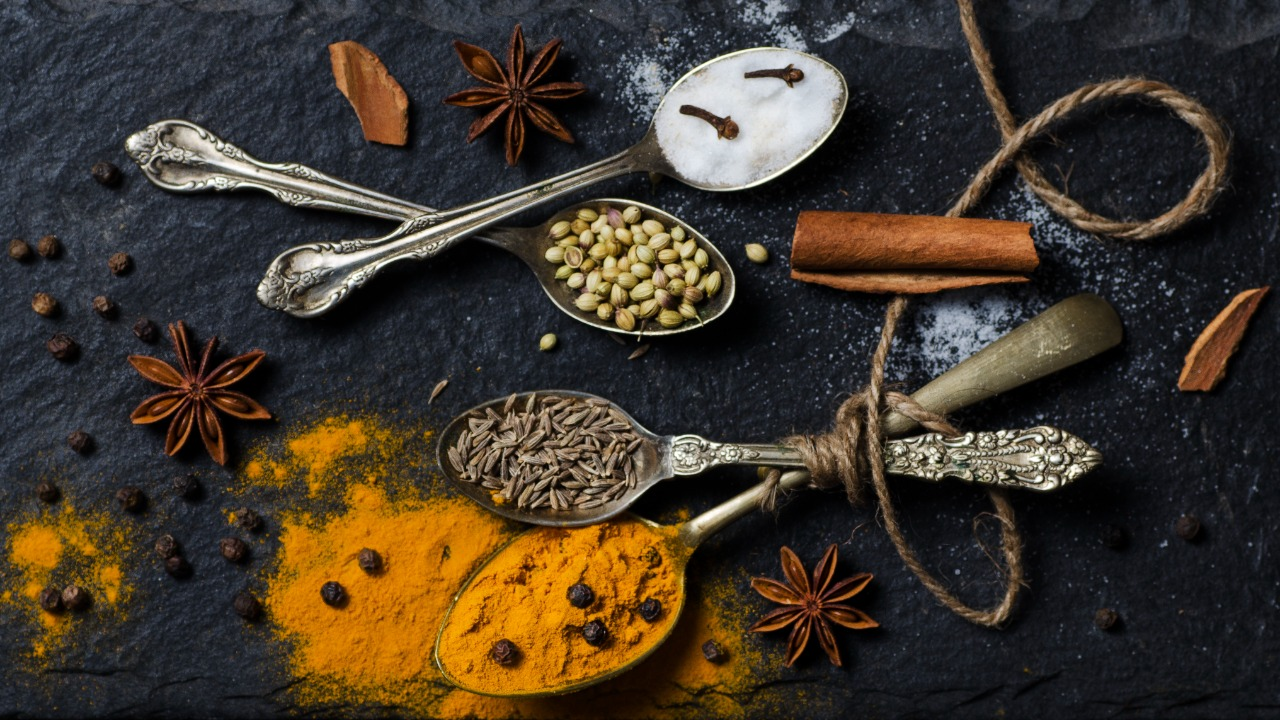Recent Post
Archive
- January 2023
- September 2022
- October 2021
Tags
Custom Menu

The Magic Of India’s Spices
Ammiji's .
Sep 28, 2022
What is food without spices? The glory of a dish can only be expressed in terms of the spices used in it. Spices not only enhance the taste of a dish, but they give it an intriguing flavour and an unforgettable aroma. What is a kheer without the aroma of green cardamom or a biryani without the collective flavour of cinnamon and saffron? What is custard if it doesn’t have a hint of nutmeg in it or a pancake that is not fragrant with vanilla bean? Spices are to food what colour is to life – essential, game-changing and adding so much more.
The history of herbs and spices is the history of civilization as a whole. Because of the trade in exotic spices from far-off lands, empires have risen and fallen, changing and reshaping the very basis of our societal structure. Our obsession with strange new tastes from far-off places has altered the course of history.
In search of pepper, Christopher Columbus sailed away for the Indies. He wasn't looking for gold or jewels; he was looking for pepper and other ingredients and spice. He never found the pepper he was looking for or the passage to the Indies he was expecting, but that’s another story.
By 2000 BCE, black pepper and cinnamon were the main spices traded in the Asian Region, while herbs and pepper were used in Southeast Asia, the Arab World, and other regions. Herbs were used by the Egyptians in the mummification process, and their hunger for rare aromatic herbs and spices fueled global trade of the time.
What is a spice?
The term "spice" in the culinary arts refers to any dried plant part, apart from the leaves, that is used to season and flavor a dish but isn't the primary ingredient. In general, spices are any seeds, fruits, roots, barks, or other plant materials that are utilized in food preparation for flavor, color, or preservation. Cinnamon comes from a tree's bark, a seed pod contains cardamom, an allspice berry is dried, and a dried flower bud is a clove.

Spices may occasionally be ground into a powder for convenience. Consuming spices has numerous health benefits in addition to adding flavor, color, and aroma.
Spices in India
India is the world's largest producer of cardamom, chilies, black pepper, mustard, and coriander. Indian cuisine is known for its rich flavor, which is derived from a variety of spices. The rich aroma, texture, and flavor of Indian spices make them highly sought-after on the international market. Indian’s voracious appetite for spices also makes it the world's largest domestic spice market.
DGFT reports that India exported spices worth $4.1 billion in FY 2021–22. The International Organization for Standardization lists 109 varieties, of which about 75 are produced in India. The spices that are most frequently generated and exported are pepper, cardamom, chili, ginger, turmeric, coriander, cumin, celery, fennel, fenugreek, garlic, nutmeg, and mace, along with spice oils and extracts.
Around the world, spices have a big impact on how we prepare and eat food. A dish can literally be made or broken by the addition or omission of a spice because each one has its own flavor and essence.
Health Benefits of Indian Spices
-
Cinnamon has anti-inflammatory properties may help lower cholesterol levels and stop the production of free radicals that harm your cells and peripheral nerves.
-
Another name for ajwain is carom seeds. Carom seeds are frequently chewed for health reasons. It has a variety of health advantages despite having a rather bitter flavor. Ajwain aids in tooth pain relief, stomach pain relief, and digestion. These seeds are also high in fiber, calcium, and proteins.
-
Coriander seeds, extract, and oils may all aid in lowering blood glucose levels by promoting the release of insulin from the pancreatic beta cells.
-
Cumin has anti-inflammatory and anti-microbial properties in addition to being high in antioxidants. Studies have shown that cumin can help with the digestive process and lower the risk of getting an infectious disease from food.
-
The benefits of clove oil include relief from toothaches and painful gums. Additionally, it is an effective treatment for heart palpitations, flu, gastrointestinal problems, sore throat, and colds.
-
Saffron provides relief from skin conditions and asthma, which can also be treated with it.
-
Skin issues can be treated with turmeric powder. Cuts and injuries can also be treated with it. The world is only now discovering the superfood abilities of turmeric. Cancer prevention, diabetes management, immunity building –turmeric may be credited with having all these benefits and many more. While people in the western world are guzzling the trendy turmeric lattes, we in India have known about the magical healing properties of turmeric for centuries.
How to Store Spices Correctly?
Keeping spices in a cool, dry environment extends their shelf life. Therefore, keeping spice jars close to your gas burner will drastically shorten their usable life. Your spices will retain their flavor longer if you store them in an opaque jar or in an insulated spice rack. Keeping them away from light and heat is the key to extending their shelf life.
Are spices perishable?
Although spices don't actually go bad or decay, they do start to lose their flavor. It is ideal to use spices within a set period of time because they are typically added for flavor. If it's not possible to grind your own ingredients, use the freshest spice blends you can find. Generally speaking, whole parched spices can last for 4 years, and powdered spices for up to 3 years when properly stored.
← Older Post Newer Post →



